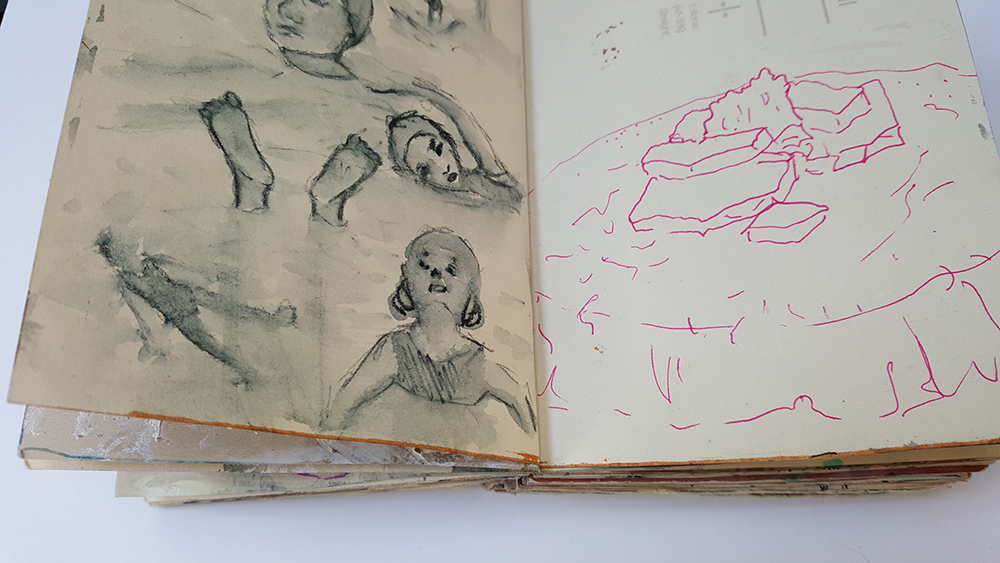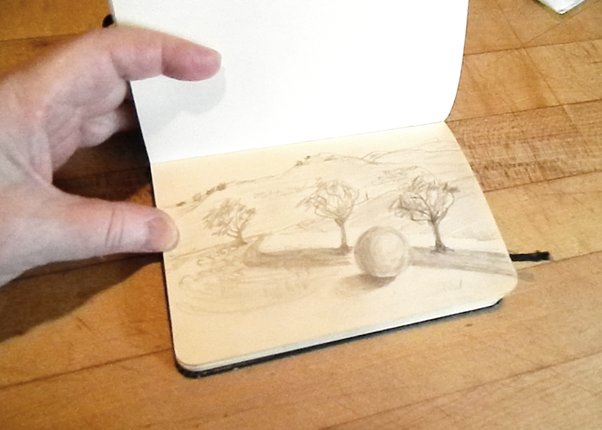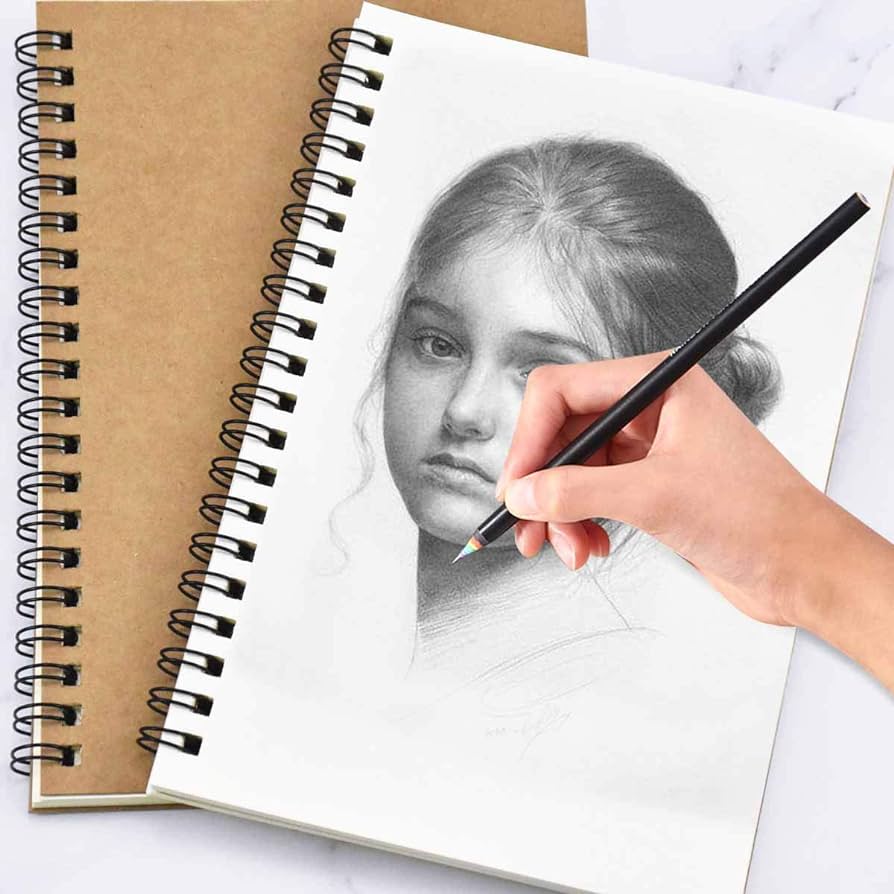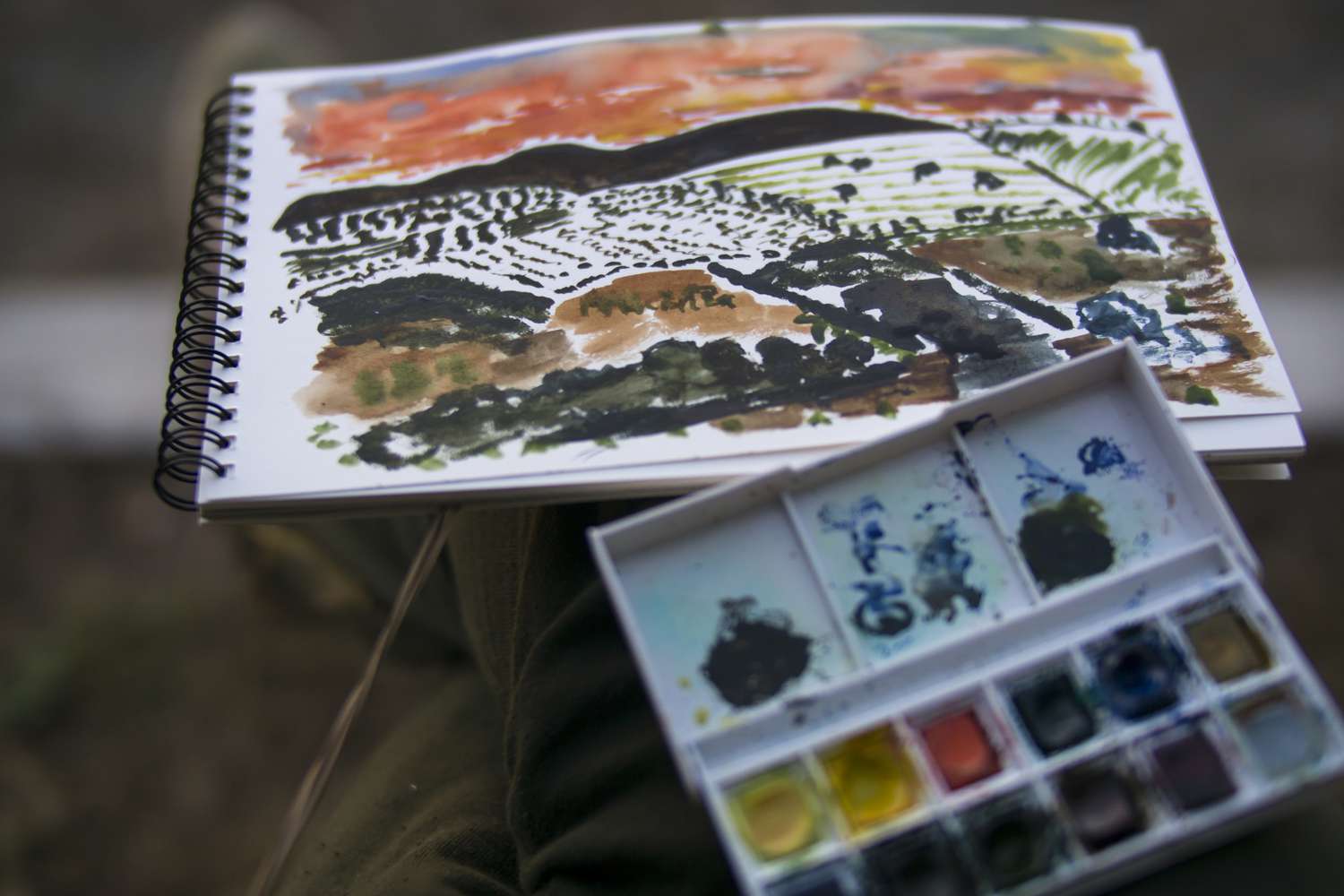Sketchbooks are like an artist’s best friend, holding a treasure trove of ideas, thoughts, and experiments. They’re indispensable tools that help you to navigate through your creative journey.
Each of the sketchbooks serves a unique purpose: one is for jotting down notes and doodling thumbnails to crystallize my ideas, another is solely dedicated to creating art, while a third acts as a canvas for the written thoughts and memories, resembling a loose diary.
Additionally, there’s the morning pages book—a place for a brain dump of thoughts to kickstart the day.
While some artists may not adhere to a regular sketchbook routine, for some people they’re essential companions that I engage with daily, weekly, or monthly, depending on their intended use.
Through this blog, let’s delve deeper into the significance of sketchbooks and reasons why you should keep it.
Reasons Why Artists Keep a Daily Sketchbook

Keeping a daily sketchbook is a cherished practice for artists, and here are five compelling reasons why they stick to it:
- Skill Refinement: Sketching from life is like a workout for an artist’s skills. It enhances observation and coordination, while tackling new subjects like tree bark texture sharpens problem-solving abilities. Plus, sketching outdoors teaches how light shifts with time and seasons, crucial for capturing realistic scenes.
- Material Exploration: Sketchbooks aren’t just for pencils; they’re playgrounds for testing new tools like watercolors or acrylics. Artists can experiment freely, mixing media or trying diverse paper types without the fear of ruining a larger piece.
- Visual Journaling: Travel sketching is a delightful way to document experiences. Unlike photos, sketches capture unique perspectives and evoke memories more vividly. Urban sketching, accompanied by notes, becomes a personal chronicle of daily adventures.
- Idea Generation: Sketchbooks serve as idea banks for future projects. Artists jot down concepts quickly, ensuring no creative spark fades away. It’s especially handy for brainstorming fantastical or design-oriented ideas that may require refining later.
- Play and Joy: Amidst honing skills and brainstorming, artists mustn’t forget the joy of creation. Sketchbooks are spaces for playful experimentation, where artistry transcends mere practice. Embracing fun nurtures creativity, leading to unexpected breakthroughs and artistic growth.
In essence, a daily sketchbook practice isn’t just about improving technique; it’s a holistic journey that blends discipline with delight, ultimately fostering artistic mastery and fulfillment.
How to use a Sketchbook?

Using a sketchbook is like having a personal playground for your creativity. There’s no strict rule on how to use it; it’s all about what feels right for you. Some folks use it as a travel companion, sketching the world around them wherever they go.
Others treat it as a laboratory, experimenting with new ideas, materials, or colors. And then there are those who turn it into a mishmash of notes, doodles, and collages, letting their imagination run wild.
When you’re starting out with a sketchbook, the key is to be yourself. Don’t worry about trying to match what you see online or making everything perfect.
Mistakes are part of the process and can teach you just as much as your successes. If something doesn’t turn out the way you hoped, just turn the page and keep going.
Of course, there’s no pressure to fill your sketchbook quickly or to share your work with the world.
It’s perfectly fine to use it whenever inspiration strikes or when you want to practice your drawing skills. Your sketchbook is your own personal space to create without judgment, so make the most of it however you see fit.
What are the Benefits of Using a Sketchbook?

Using a sketchbook can bring a bunch of good stuff your way!
First off, it’s like a playground for your ideas. You can scribble down anything that pops into your head without feeling the pressure of making it perfect. Sometimes just making a random mark on the page can kickstart a whole creative flow.
It’s a safe space to try new things and make mistakes. You can experiment, mess around, and improve your skills without worrying about making a mess.
Plus, it’s portable, so you can take it wherever you go. It’s great for jotting down quick sketches of things you see around you, capturing the essence of a moment better than a photo sometimes.
One cool thing about sketchbooks is they track your progress over time. You can see how much you’ve grown and improved by looking back at your old sketches. It’s kind of like flipping through a photo album but with your artwork. And when you’re feeling stuck, you can flip through old sketches for inspiration. You might find forgotten gems or ideas that are ripe for a fresh spin.
So, in a nutshell, sketchbooks are like your creative sidekick. They’re a playground, a learning tool, a progress tracker, and an inspiration hub all rolled into one. Plus, they’re just plain fun to fill up!
What Kind of Sketchbook Should You Use?

Choosing the right sketchbook depends on your personal preferences and needs.
Here are some factors to consider:
- Paper Thickness and Texture: Think about whether you need thick paper or paper with texture. For wet media like watercolors, a watercolor or mixed media sketchbook might be suitable. Sizing of the paper is also important to prevent bleeding with ink.
- Portability: If you’ll be carrying your sketchbook around a lot, consider a hardback book with an elastic closure to protect the pages. Look for ones with pockets if you like to collect inspiring items while traveling.
- Orientation: Decide if you prefer landscape, portrait, or square orientation for your sketches. There are sketchbooks available in all these formats.
- Size and Cover Type: If you mostly work at home, opt for a larger size. Soft cover books are space-saving but less durable for frequent travel.
- Favorite Brands: Some artists have personal favorites. For example, Seawhite of Brighton sketchbooks are popular for their variety in sizes, paper quality, and affordability.
- Experimental Freedom: Consider how comfortable you feel with the sketchbook. It’s essential to have a book where you can freely experiment without worrying about ruining expensive pages.
- Notebooks for Writing: For writing purposes, choose a notebook with lined, dot grid, or plain pages based on your preference. Ensure it has enough pages to last for a while.
Ultimately, the best way to find the perfect sketchbook is to experiment with different types until you find the one that suits your style and needs the best.
Conclusion
In conclusion, mastering color theory is like unlocking the secrets of the artistic universe.
It’s not just about mixing paint or choosing hues randomly; it’s about understanding the language of colors and using it to speak to your audience.
Color theory isn’t just for the elite; it’s a tool that every artist can wield to elevate their craft.
By grasping concepts like the psychology of color and balancing hues effectively, you can create artwork that not only captivates the eyes but also stirs the soul.
So, whether you’re a seasoned painter or just starting out, embrace the colorful journey of artistic expression and let your creativity shine through every stroke of the brush.


Leave a Reply